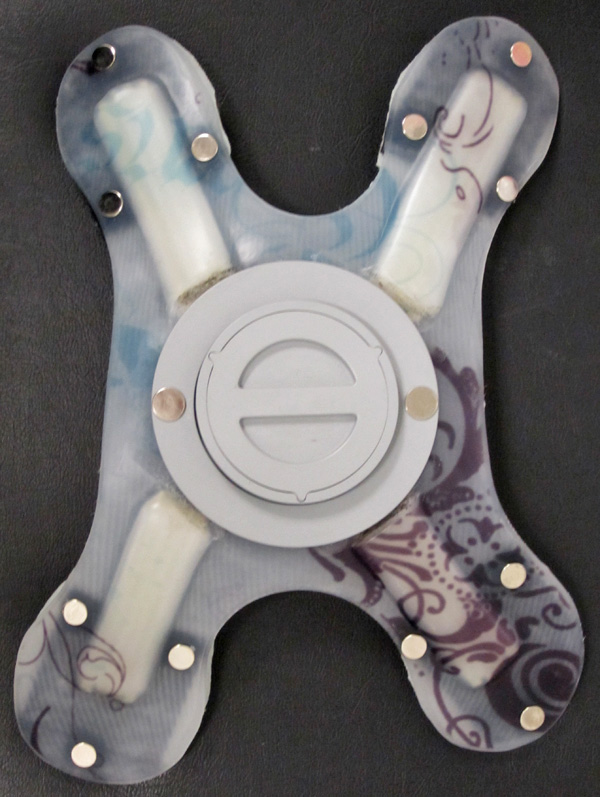Magnetic Mini-Mover Procedure

For more than 50 years, pectus excavatum has been corrected by major surgical reconstruction through the use of either the Nuss or Ravitch procedures. Both of these procedures require big operations and hospitalization for pain management.
In an effort to make the pectus excavatum operation better for patients and their families, we have developed a novel method to correct the pectus excavatum chest wall deformity. We call this new method the Magnetic Mini Mover (3MP) procedure.
The Magnetic Mini-Mover Procedure (3MP) is a novel minimally invasive method of correcting pectus excavatum developed at UCSF Pediatric Surgery. With this method the deformed costal cartilages are gradually reformed by a controlled gradual outward "pull" on the depressed breastbone. This is achieved with an outpatient surgical procedure and without the need for painful implanted chest wall struts. Two magnets, one implanted inside the chest and attached to the sternum and the second one outside the chest wall and attached to an external brace, are used together to create a magnetic force field which applies a controlled sustained pull.
The Magnetic Mini-Mover Trial Study is now open closed for enrollment
Advantages of the Magnetic Mini-Mover Procedure
Magnetic Mini-Mover Procedure (3MP) |
Ravitch and Nuss Procedures |
| Minimally invasive outpatient operation, and the patient can go home that day. | The Ravitch procedure is a large invasive operation perfomed through an incision on the front of the chest. The Nuss procedure is performed through two smaller incisions on the side of the chest. Both require a 3-7 day hospital stay for pain management. |
| Immediate return to normal activity after surgery with no physical activity restrictions. | Physical activity is restricted for several weeks to months. |
| Minimal pain and discomfort during gradual correction | Requires hospitalization for pain management immediately after surgery; pain and discomfort can last for weeks to months. |
| Chest wall appearance gradually changes until finally corrected. | Quick alteration of chest wall appearance |
| Ability to "touch up" correction if needed later by reusing the external Magnatract device. | Corrections require additional surgery. |
| Capacity to set the amount of "pull" by adjusting the magnet in the external Magnatract device. | N/A |
| Monitor compliance in wearing the external Magnatract device with a built-in pressure recorder. | N/A |
How the magnets work

To achieve the gradual reformation of the chest wall, we use two magnets. The internal titanium-encased magnet, called the Magnimplant, is surgically attached to the sternum (breastbone) and can be felt under the skin. The second external magnet, called the Magnatract, is suspended in a lightweight external bracing device. The attraction between the two magnets creates a steady force pulling the depressed sternum outward.
The operation to implant the Magnimplant is a brief outpatient procedure and the child goes home the same day. Once the small incision is healed, the child begins wearing the outside brace containing the external magnet. The device is small and light enough to be worn comfortably under a t-shirt or normal school clothes. It is held in place by the force field between the two magnets. The external magnet allows individual adjustment in small increments of the distance (and, thus, force) applied to the sternum.
Goal of the procedure
The goal of the Magnetic Mini Mover procedure is to promote the rib cartilage to move to a more normal position by gradual correction of the chest wall over a period of months. This is the same principle used in moving teeth with orthodontic braces.
Where is the procedure offered?
This procedure is being offered in a multicenter clinical trial open to patients who are between 8–14 years of age. This procedure is not available outside of the trial at UCSF or the participating two study sites in Northern California and Kansas. If you would like to be considered for this clinical trial please contact the Pectus Trial Coordinator at: [email protected]
Further Information
If you would like to read more on the Magnetic Mini-Mover Procedure, you can download our article from the Journal of Pediatric Surgery: Magnetic Mini-Mover Procedure for pectus excavatum [pdf]. You can also contact our Pectus Trial Coordinator at [email protected]
Magnetic Mini-Mover Study Trial in the News
 Magnet Therapy Corrects South Bay Boy's Birth Defect
Magnet Therapy Corrects South Bay Boy's Birth Defect
CBS5 - Apr 07, 2010
Magnets have a brand new use. They are being tested in a new procedure to correct a rare birth defect , Pectus Excavatum, in a Los Gatos boy. Dr. Kim Mulvihill reports.
Magnet Therapy (CBS5 News Video)
 Novel magnet treatment used to correct sunken chest
Novel magnet treatment used to correct sunken chest
ABC7News.com - Nov 08, 2007
UCSF has created a groundbreaking new procedure to treat chest deformities in children and teens. This minimally invasive procedure is already transforming one 14-year-old's life.
View ABC News Highlights - Read Full Story in San Francisco Chronicle
Magnetic Mini-Mover Study Trial
The multicenter clinical trial is now closed for enrollment. This procedure is not available outside of the trial at UCSF or the participating two study sites in Northern California.
You can find more information on our Magnetic Mini-Mover Trial Study and Magnetic Mini-Mover Trial Study FAQ page.
